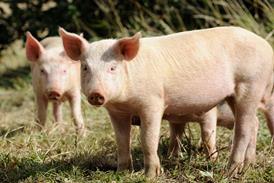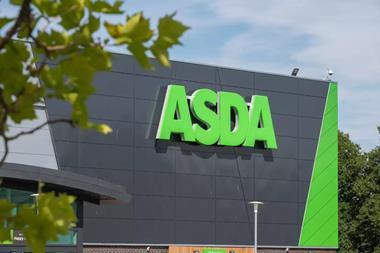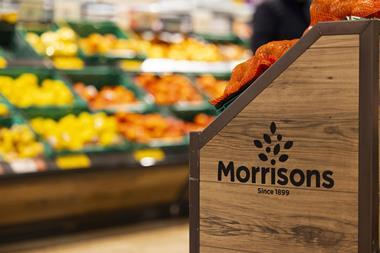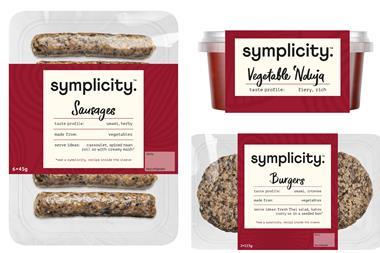Thanks to hi-tech gizmos like RFID tags, instore media and handheld computers (see below), shopping for groceries will actually be fun.
Or that is what design consultancy Kinneir Dufort and IT specialist Appliance Studio think. They were asked to visualise the supermarket of the future for a design competition run by the Helen Hamlyn Research Centre.
Their entry was not only different in terms of the technology used, but also in terms of the shopping experience itself.
Kinneir Dufort product designer Chris Padain explains: "People see shopping as a social experience. We tried to emphasise the fun part of it in the sense of it being a tactile and sensory experience. We did not want it purely technology-driven. It had to centre on the customer's wants and needs."
Brainstorming the whole shopping experience from the perspective of three very different types of shopper a young mother with her child, a visually impaired old man, and a wheelchair user they came up with a revolutionary store format that centres around a cafe hub.
Gone are the endless crowded aisles. Instead, shoppers sit at computer terminal tables with handheld PDAs (personal digital assistants) programmed to personalise their shopping experience. Say they like tomato soup, for instance. They will be able to order it through their PDA which will also show them three similar products as alternatives in much the same way as Amazon says "if you liked this book, you might like..." once you have made a purchase.
Shoppers don't put products in their basket, however. Someone does that for them at a distribution warehouse and then drops off their shopping at a designated pick-up point. Or their shopping can be delivered straight to their home.
Older, more sensory aspects
There is no need to leave the hub at all it takes up 60% of the shop floor space. But if shoppers want to touch or see what they are buying, they can wander down the food galleries' and peruse the products on the shelves.
These, too, are a very different proposition from today's loaded entities. Much smaller, they are little more than display cabinets, but, crucially, ones that allow the shopper to feel the product.
"We did talk about getting rid of them, but people like them so we kept them, albeit in a dumbed down way."
For the same reason, the supermarket of the future also revives a tradition of the past market stalls. "They bring back the older, more sensory aspects of buying," says Padain.
One thing you won't see, though, is shelf-edge tagging something almost all the multiples are currently testing. "It confuses people," says Padain. "But if you walk down the soup aisle, the handheld device knows you are there, and knows whether you buy value or premium goods."
And as for payment, shoppers won't use credit cards or even chip and pin. They will shop on the basis of a loyalty-style scheme using latent semantic indexing' a picture of an individual's shopping habits and preferred payment methods collated over time. The table consoles act as personalised checkouts.
Padain explains: "The point is to remove a lot of the traffic. We have removed the checkout completely and turned the supermarket into a much more social environment.
"The emphasis is on being able to sit down and relax while shopping."
{{ANALYSIS }}
Or that is what design consultancy Kinneir Dufort and IT specialist Appliance Studio think. They were asked to visualise the supermarket of the future for a design competition run by the Helen Hamlyn Research Centre.
Their entry was not only different in terms of the technology used, but also in terms of the shopping experience itself.
Kinneir Dufort product designer Chris Padain explains: "People see shopping as a social experience. We tried to emphasise the fun part of it in the sense of it being a tactile and sensory experience. We did not want it purely technology-driven. It had to centre on the customer's wants and needs."
Brainstorming the whole shopping experience from the perspective of three very different types of shopper a young mother with her child, a visually impaired old man, and a wheelchair user they came up with a revolutionary store format that centres around a cafe hub.
Gone are the endless crowded aisles. Instead, shoppers sit at computer terminal tables with handheld PDAs (personal digital assistants) programmed to personalise their shopping experience. Say they like tomato soup, for instance. They will be able to order it through their PDA which will also show them three similar products as alternatives in much the same way as Amazon says "if you liked this book, you might like..." once you have made a purchase.
Shoppers don't put products in their basket, however. Someone does that for them at a distribution warehouse and then drops off their shopping at a designated pick-up point. Or their shopping can be delivered straight to their home.
Older, more sensory aspects
There is no need to leave the hub at all it takes up 60% of the shop floor space. But if shoppers want to touch or see what they are buying, they can wander down the food galleries' and peruse the products on the shelves.
These, too, are a very different proposition from today's loaded entities. Much smaller, they are little more than display cabinets, but, crucially, ones that allow the shopper to feel the product.
"We did talk about getting rid of them, but people like them so we kept them, albeit in a dumbed down way."
For the same reason, the supermarket of the future also revives a tradition of the past market stalls. "They bring back the older, more sensory aspects of buying," says Padain.
One thing you won't see, though, is shelf-edge tagging something almost all the multiples are currently testing. "It confuses people," says Padain. "But if you walk down the soup aisle, the handheld device knows you are there, and knows whether you buy value or premium goods."
And as for payment, shoppers won't use credit cards or even chip and pin. They will shop on the basis of a loyalty-style scheme using latent semantic indexing' a picture of an individual's shopping habits and preferred payment methods collated over time. The table consoles act as personalised checkouts.
Padain explains: "The point is to remove a lot of the traffic. We have removed the checkout completely and turned the supermarket into a much more social environment.
"The emphasis is on being able to sit down and relax while shopping."
{{ANALYSIS }}















No comments yet